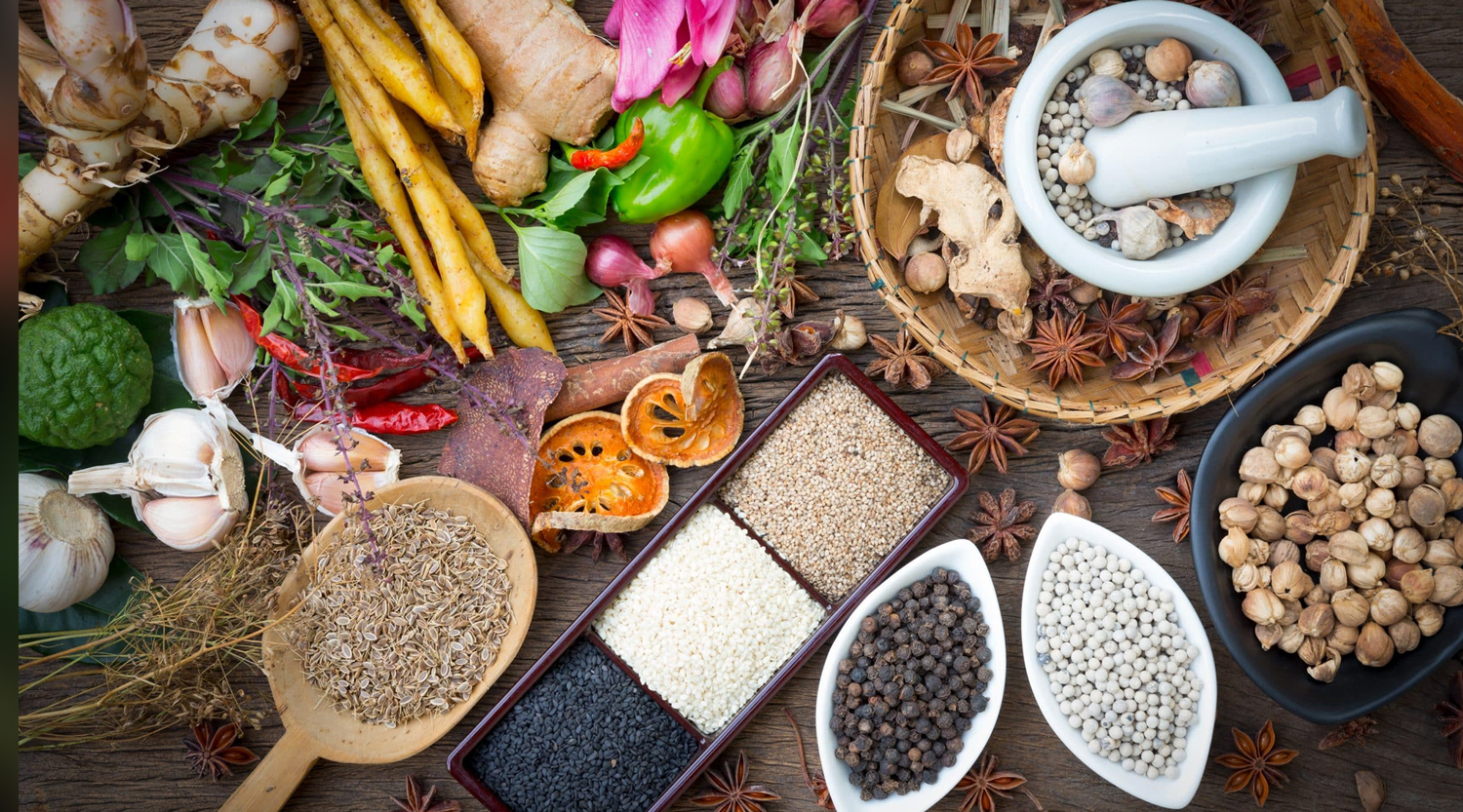
The Dosha Diet: Customizing Your Meals According to Your Dosha
Introduction to Doshas:
The foundation of Ayurveda is the belief that we happen to be composed of various forms of energy. Vata, Pitta, & Kapha are three different doshas, and they each characterize the most prevalent mental or physical condition. Although each of these exist in every person, each of us has a dominant dosha that is fixed from the time of birth along with an equilibrium between the remaining two, that is equal, if not always constant.
We are in good shape whenever our doshas are in harmony, and when they are not, we get sick, which often shows up as skin problems, digestive problems, sleeplessness, frustration, and worry.
You must be asking yourself, “What is ayurvedic diet?” The Ayurvedic diet is a well-known dietary regimen that has been followed for a number of centuries. It is founded on Ayurvedic medical theories and concentrates on harmonizing various forms of vitality in the body, which is supposed to promote health. The goal is to improve your state of wellness by advising eating regimens that are appropriate for your nature (known as Prakurti), present dosha imbalances (known as Vikriti), variations in the seasons, timing, and the way of life.
Identify Your Dosha?
Here are certain characteristics of each of the Doshas:
Vata Dosha:
It is said to be composed of the components space plus air. People who fall under this group tend to be frigid, light, dry, erratic, hard, mobile, swift, and constantly changing. They are extremely adaptable and have a lean, lightweight body frame. They tend to have sporadic spurts of energy and are prone to weariness spells. They enjoy thrills and unusual experiences. They are very ready to accept forgiveness when they are mistreated. They are dynamic, imaginative, and adaptable.
Pitta Dosha:
It is composed of the components of fire as well as water. The characteristics of someone who falls into this group include heat, unctuous excellence, simplicity, and sharpness. They have an elevated body temperature, great metabolism, brief intervals of restful sleep, lots of energy, and a voracious appetite. They have a sharp mind and excellent concentration skills. They are competent individuals making decisions, educators, and communicators. They are straightforward, concise, sharp-witted, and frequently aggressive.
Kapha Dosha:
It is composed of the elements earth plus water. This group’s members are described as having a heavy, greasy, resilient, and cold character. They have a powerful physique, great stamina, and effortless, glowing skin. They digest food normally and enjoy restful sleep. They are innately composed, kind, and compassionate. They naturally possess the capacity to appreciate life and are at ease in a routine. The kapha sign is powerful, devoted, patient, steadfast, and encouraging.
Dietary Suggestions for People with Dominance of Vata Dosha:
Such folks shouldn’t go without food for excessively long and should consume warm vata foods often. Food for vata dosha are nutritious, moisturizing, help with absorption, and aid in the body’s detoxification process. Fresh as well as cooked fruit, grains, sweet-tasting dairy, acidic foods like lemons and limes, and salty items that are hydrating and warming must all be part of the diet.
They may consume the following vata foods:
- Ripe fruits with a pleasant sweet flavor
- Modest quantities of dried fruits
- Boiled veggies
- Cooked grains such as brown rice, wheat, etc.
- Flavored teas
- Moong dal
- Moderate amounts of brown sugar and jaggery
- Limited supplies of spices
- Dairy goods
The food for vata dosha to be avoided:
- Foods that are bitter, raw, or astringent, such as broccoli, mushrooms, peas, etc.
- Yoghurt with flavour or powdered milk
- Several spices, including fenugreek, coriander seed, etc.
- Raw veggies
Dietary Suggestions for People with Dominance of Pitta Dosha:
Due to pitta’s sensitivity, pitta foods shouldn’t be particularly hot, sour, or salty. Pitta persons have excellent digestion and can consume almost anything without experiencing any problems. The dish shouldn’t be scalding hot; it should just be chilly or mild warm. A vegan or vegetarian diet is suggested under food for pitta dosha.
They may consume the following pitta foods:
Delicious fruits like apples, melons, oranges, grapes, sweet cherries and berries, mangoes, pomegranates.
Veggies with a sweet or bitter flavor, such as potatoes, cabbage, and cucumber.
- Steamed grains
- Except for lentils, all types of legumes
- Molasses with honey
- Spices, such as black pepper, turmeric, etc.
- Milk and other dairy goods
- Besides spinach, all greens
- The food for pitta dosha they must stay away from:
- Dried fruit
- Tart fruits
- Yeast-based bread
- Soy
Dietary Suggestions for People with Dominance of Kapha Dosha:
They ought to consume warm, dry kapha foods. Fruits and salads range from being mildly cooked to being raw. Spicy cuisine is also OK under food for Kapha dosha. Instead of steaming, the food should be cooked using a drying method like baking, broiling, grilling, or sautéing. Overeating should be avoided by Kapha individuals.
They may consume the following kapha foods:
- apples, cherries, and other fruits.
- vegetables that are spicy and bitter, such as cabbage, carrots, etc.
- grains such as barley, maize, etc.
- legumes of every sort, except beans and lentils
The food for kapha dosha they must stay away from:
- Dry fruits
- White sugar
- Yoghurt
- Oily and fatty foods
- Additional Tips to Maintain Healthy Eating:
After understanding what is ayurvedic diet and the kind of diet good for each dosha, here are some general tips:
- Avoid eating snacks since they might throw off your digestion cycle.
- Avoiding consuming too much food
- After eating, your stomach shouldn’t feel entirely full.
- Eat meals that are packed with prana and freshly prepared.
- Any leftovers should be avoided.
- Make an effort to incorporate all six flavors in the food you eat.
Conclusion:
The goal of an Ayurvedic diet is not to deprive yourself of food, but rather to consume it in amounts that are in harmony with your psychological and physical composition, leave you feeling light and energized, and do not contribute to toxicity.









